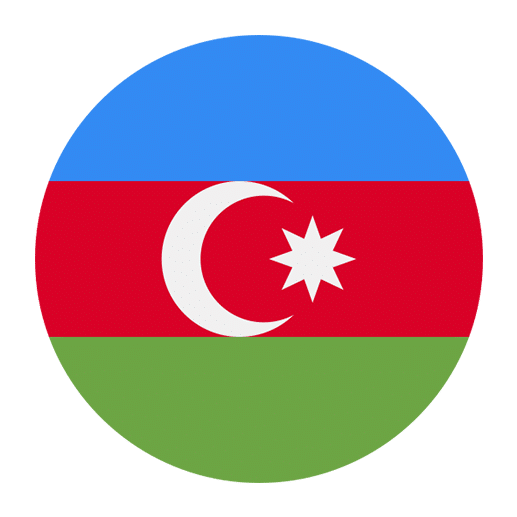Learning the intricacies of any language involves understanding how to describe and compare various objects, people, and situations. In Azerbaijani, as in English, adjectives play a crucial role in this process. One of the key aspects of adjectives is their degrees of comparison, which allow us to express the relative extent of a quality. In this article, we will delve into the degrees of comparison in Azerbaijani adjectives, helping you understand how to form and use them correctly.
Introduction to Azerbaijani Adjectives
Azerbaijani, a Turkic language spoken primarily in Azerbaijan and parts of Iran, has a rich system of adjectives that describe various qualities such as size, color, and shape. Like English, Azerbaijani adjectives can be used to compare different nouns by indicating varying degrees of a particular attribute. These degrees are the positive, comparative, and superlative forms.
Before we explore the degrees of comparison, it is important to understand how adjectives function in Azerbaijani. Unlike English, Azerbaijani adjectives typically do not change form to agree with the noun they describe. However, they do change form when expressing different degrees of comparison.
The Positive Degree
The positive degree of an adjective is its base form, used to describe a quality without making any comparison. For instance:
– gözəl (beautiful)
– böyük (big)
– kiçik (small)
– uzun (long)
– qısa (short)
These adjectives can be used in a sentence to describe a noun in its simplest form:
– Bu, gözəl bir evdir. (This is a beautiful house.)
– O, böyük bir itdir. (That is a big dog.)
The Comparative Degree
The comparative degree is used to compare two nouns, indicating that one has more or less of a certain quality than the other. In Azerbaijani, this is usually done by adding the suffix “-daha” before the adjective and “-dan” or “-dən” after the noun being compared.
For example:
– Bu ev daha gözəldir. (This house is more beautiful.)
– O it daha böyüktür. (That dog is bigger.)
When comparing two nouns directly, the structure changes slightly:
– Bu ev o evdən daha gözəldir. (This house is more beautiful than that house.)
– O it bu itdən daha böyüktür. (That dog is bigger than this dog.)
Notice that the word “daha” precedes the adjective, and the suffix “-dən” or “-dan” follows the noun being compared.
Irregular Comparatives
Some adjectives have irregular comparative forms, meaning they do not follow the standard pattern of adding “daha.” Here are a few examples:
– yaxşı (good) → daha yaxşı (better)
– pis (bad) → daha pis (worse)
Even though these adjectives use “daha,” their comparative forms might appear irregular when translated into English.
The Superlative Degree
The superlative degree expresses the highest degree of a quality among three or more nouns. In Azerbaijani, the superlative is formed by adding the prefix “ən” before the adjective.
For example:
– Bu, ən gözəl evdir. (This is the most beautiful house.)
– O, ən böyük itdir. (That is the biggest dog.)
When comparing within a group, you can use the following structure:
– Bu evlər arasında, bu ev ən gözəldir. (Among these houses, this house is the most beautiful.)
– Bütün itlər arasında, o it ən böyüktür. (Among all the dogs, that dog is the biggest.)
Irregular Superlatives
Similar to comparatives, some adjectives have irregular superlative forms:
– yaxşı (good) → ən yaxşı (best)
– pis (bad) → ən pis (worst)
Despite their irregularities, these adjectives follow the same general rule of adding “ən” to indicate the superlative degree.
Exercises and Practice
To fully grasp the degrees of comparison in Azerbaijani adjectives, it is essential to practice. Here are a few exercises:
Exercise 1: Positive to Comparative
Transform the following adjectives from their positive form to their comparative form:
1. gözəl (beautiful)
2. böyük (big)
3. kiçik (small)
4. uzun (long)
5. qısa (short)
Answers:
1. daha gözəl
2. daha böyük
3. daha kiçik
4. daha uzun
5. daha qısa
Exercise 2: Comparative to Superlative
Transform the following adjectives from their comparative form to their superlative form:
1. daha gözəl (more beautiful)
2. daha böyük (bigger)
3. daha kiçik (smaller)
4. daha uzun (longer)
5. daha qısa (shorter)
Answers:
1. ən gözəl
2. ən böyük
3. ən kiçik
4. ən uzun
5. ən qısa
Exercise 3: Sentence Transformation
Rewrite the following sentences to use the comparative and superlative forms of the adjectives:
1. Bu, gözəl bir evdir. (This is a beautiful house.)
2. O, böyük bir itdir. (That is a big dog.)
Answers:
1. Comparative: Bu ev daha gözəldir. (This house is more beautiful.)
Superlative: Bu, ən gözəl evdir. (This is the most beautiful house.)
2. Comparative: O it daha böyüktür. (That dog is bigger.)
Superlative: O, ən böyük itdir. (That is the biggest dog.)
Common Pitfalls and Tips
When learning degrees of comparison in Azerbaijani, there are a few common pitfalls to watch out for:
1. Overusing “daha” and “ən”:
While “daha” and “ən” are essential for forming comparative and superlative degrees, overuse can make sentences sound repetitive. Try to vary your sentence structures to avoid redundancy.
2. Irregular Forms:
Pay attention to irregular comparative and superlative forms. These do not follow the standard patterns and must be memorized separately.
3. Contextual Clarity:
Ensure that the context of your comparison is clear. Using comparative and superlative forms without a clear frame of reference can lead to confusion.
4. Practice Regularly:
Regular practice is key to mastering degrees of comparison. Engage in exercises, conversations, and writing activities to reinforce your understanding.
Conclusion
Understanding and using degrees of comparison in Azerbaijani adjectives is a vital skill for effective communication. By learning the rules for forming the positive, comparative, and superlative degrees, you can describe and compare nouns with precision and clarity. Remember to practice regularly, pay attention to irregular forms, and vary your sentence structures to avoid redundancy. With dedication and practice, you’ll become proficient in using Azerbaijani adjectives to their fullest potential. Happy learning!

